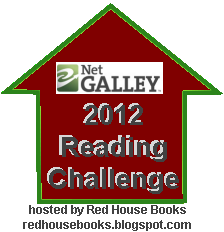 Published by Viking Adult
Published by Viking Adult
Released November 8, 2012
400 pages
Where I got it: E-galley received from publisher via NetGalley
Rating: 




Description (from Goodreads):
Two hundred years ago, Jacob and Wilhelm Grimm published the first volume of Children’s and Household Tales. Now, at a veritable fairy-tale moment—witness the popular television shows Grimm and Once Upon a Time and this year’s two movie adaptations of “Snow White”—Philip Pullman, one of the most popular authors of our time, makes us fall in love all over again with the immortal tales of the Brothers Grimm.
From much-loved stories like “Cinderella” and “Rumpelstiltskin,” “Rapunzel” and “Hansel and Gretel” to lesser-known treasures like “Briar-Rose,” “Thousandfurs,” and “The Girl with No Hands,” Pullman retells his fifty favorites, paying homage to the tales that inspired his unique creative vision—and that continue to cast their spell on the Western imagination.
I grew up loving fairy tales, especially those by the Brothers Grimm. I had them narrated on records, and I’d sit or lay on the carpet and just listen and let my imagination take me away. I took the stories at face value, and never questioned how odd they are, or why things happen in them the way they do. It was just how it was.
Now, as an adult, it’s wonderful to be able to get reacquainted with the stories, and to read some I’d never heard of before. In this new translation and version, Philip Pullman has selected 50 of the stories and presents them once again. He doesn’t embellish much, but tries to find the best version of each tale from the many editions the Grimm brothers published. At the end of each story, Pullman gives bibliographical references for similar stories that appear in sources like Mother Goose, Italo Calvino, and the Arabian Nights, among others. When available, Pullman also tells us where the brothers first heard the tale, and from whom. It’s a fantastic starting point for those looking for references to related sources.
As straightforward as the stories are, Pullman still gives us his own thoughts about them at the end, and choices he would make if he were to change them. For example, in his version of Rapunzel he has Rapunzel complain of her clothes being too tight, revealing to the witch that she is pregnant, rather than the alternative of Rapunzel stupidly asking the witch why she is heavier to pull up than the prince. Pullman argues that his way keeps Rapunzel completely innocent and worthy of her eventual redemption. Pullman also wrote a fantastic introduction to the volume, giving intelligent analysis of why and how fairy tales work.
This is a beautiful book of well-loved stories, and Pullman’s own writing makes it worthwhile to anyone who is interested in folklore, storytelling, and the sources of our common narrative standards.





































I’ve been hesitantly excited about this one, because while I love fairy tales and Philip Pullman, I feared they might not be as awesome as they DESERVE to be. BUT this sounds even better than what I was imagining, with all of the historical analysis and his take on the tale. YAY!!!!
I really want to read this. I am such a fan of both fairy tales and Pullman, its like a perfect marriage. And I am glad to hear that it is everything I had imagined and hoped!
OOOOOH! YAY! I’ve been a huge fairy tale fan practically since birth and I definitely dig the extra tidbit on sources (nerd alert, I know!). You have certainly peaked my interest here. Thanks for sharing this gem!